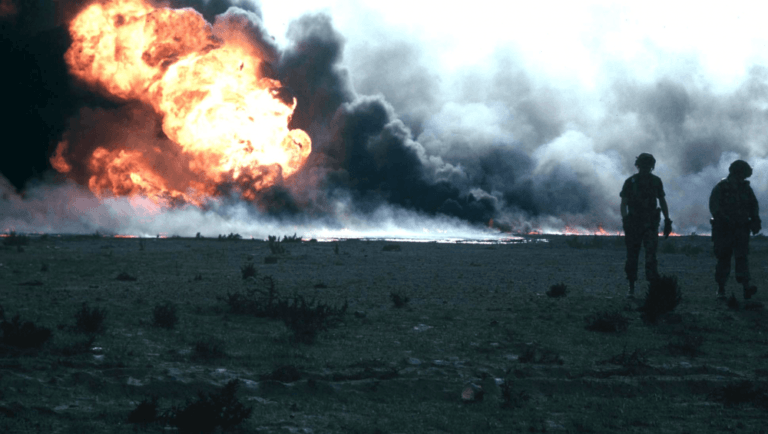Mishraq State Sulfur Mine Fires in Iraq

Sulfur Mine Fires in Iraq
In June of 2003, a fire ignited at the Mishraq State Sulfur Mine Plant near Mosul in northern Iraq. The fire burned for almost a month, becoming the largest manmade sulfur fire in recorded history. It released roughly 42 million pounds of sulfur dioxide per day, as well as a significant amount of hydrogen sulfide. Field samples of air in the vicinity of the fire detected these toxic gases at levels immediately dangerous to health and life. As such, servicemembers involved with fighting this fire became at risk for negative health-related outcomes.
Short-Term and Long-Term Health Effects of Exposure to the Iraq Sulfur Mine Fires
Firefighters from the 101st Airborne Division were the most exposed as they were in closest proximity to the fire for the longest periods of time. As a result, they experienced both short-term and long-term health effects. Short-term health effects include irritation and reddening of the nose and throat, eye irritation, and coughing. Furthermore, long-term effects include a rare condition of lung damage known as constrictive bronchiolitis, an asthma-like condition. Individuals with constrictive bronchiolitis tend to have shortness of breath on exertion, but normal X-rays and inconclusive pulmonary function testing. Therefore, it is sometimes difficult to diagnose. The highest levels of exposure can burn skin and cause severe airway obstruction, hypoxia (inadequate supply of oxygen to the body), pulmonary edema (fluid accumulation in the lungs), and death.
In 2007, the U.S. Army Center for Health Promotion and Preventative Medicine visited Fort Campbell in Kentucky, the home base for the 101st Airborne Division. Medical personnel learned that from late 2004 to February 2007, 41 soldiers citing exposure to the sulfur fire, reported unexplained shortness of breath on exertion. Additionally, 19 soldiers underwent lung biopsies and were all diagnosed with constrictive bronchiolitis. The Department of Defense (DoD) now considers constrictive bronchiolitis to be plausibly associated with exposure to the sulfur mine fire in Iraq. Sampling data from the DoD also suggests levels of sulfur dioxide and hydrogen sulfide were not exclusively located in the immediate vicinity of the sulfur mine fire. Instead, these harmful gases reached troops within a 50-kilometer radius of the fire.
VA Disability Claims Related to Iraq Sulfur Mine Fires
While the above-mentioned health effects have been scientifically linked with high exposures to sulfur dioxide, VA does not have a presumption of service connection for those disabilities. Instead, VA has mandatory instructions on how to adjudicate these exposure claims on a case-by-case basis. These instructions are located in VA Training Letter 10-03 and VA’s M21-1 Operating Manual. It serves to provide information to regional office employees regarding specific environmental hazard incidents, potential health risks to servicemembers and veterans, and provide guidance on handling these claims. Importantly, regional office employees often have trouble rating these claims because the servicemembers and veterans who are affected are typically comfortable at rest and capable of performing activities of daily living. However, they become short of breath upon slight physical exertion and unable to keep up with physical demands. Constrictive bronchiolitis does not have its own diagnostic code, and so VA raters are directed to use an analogous rating. Furthermore, VA is advised to utilize extra-schedular rating in cases when there is evidence that a veteran’s employment is affected.
About the Author
Share this Post
